Business Strategy from Wharton: Competitive Advantage
https://learning.edx.org/course/course-v1:Wharton+StrategyX+1T2023/home
Strategy
Definition
- a distinctive …
- different from competitors
- …array of…
- more than one
- …interdependent choices that…
- complementary
- …address certain questions
- objective
- where to compete (product, customers, geography)
- value proposition
- source of competitive advantage (price, costs; activites, resources, capabilities)
Evaluation
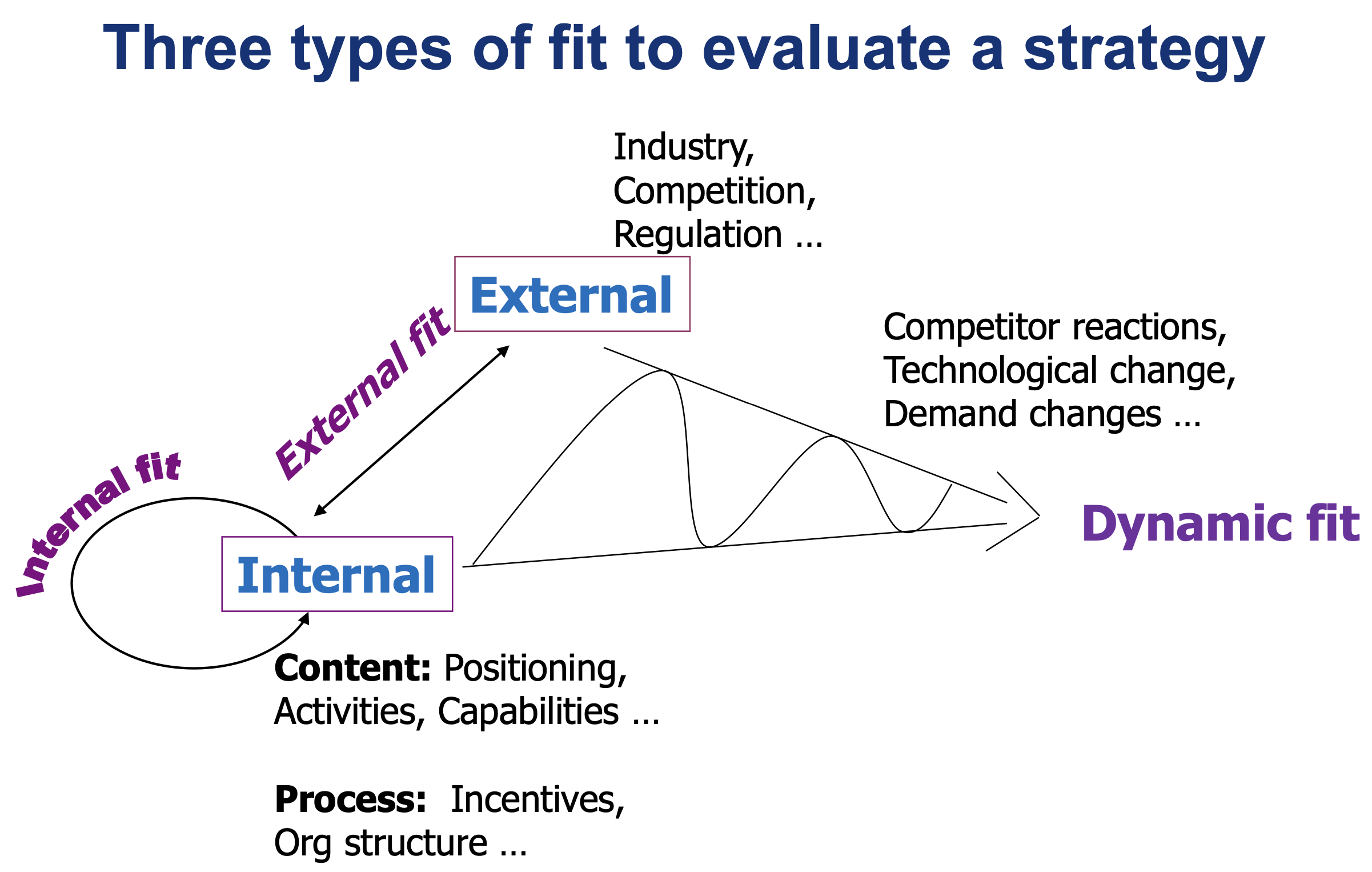
Internal Fit
Strategy, CA and OE vs SP
Competitive advantage
Fundamentally higher prices and/or lower costs
Operational effectiveness (OE)
- Best practice → absolute but not relative improvement (often through copying)
- Necessary but not sufficient, as often leads to strategic convergence, meaning the value proposition too similar for consumers (low differentiation)
Strategic positioning (SP)
- Doing different things → differentiation
- But involves tradeoffs
Growth trap
The larger you are, the harder it is to grow at the same rate, and forced growth (to please stakeholders) comes with tradeoffs (bad acquisitions, reduced profitability, etc)
Many things is better than one thing
- One thing is easier to duplicate with increased efficiencies (even if patented)
- One thing is easier to be overtaken with government assistance (so less efficient but fast to scale)
- One thing is easier to be replaced by new technologies
Value chain - what activities make it up?
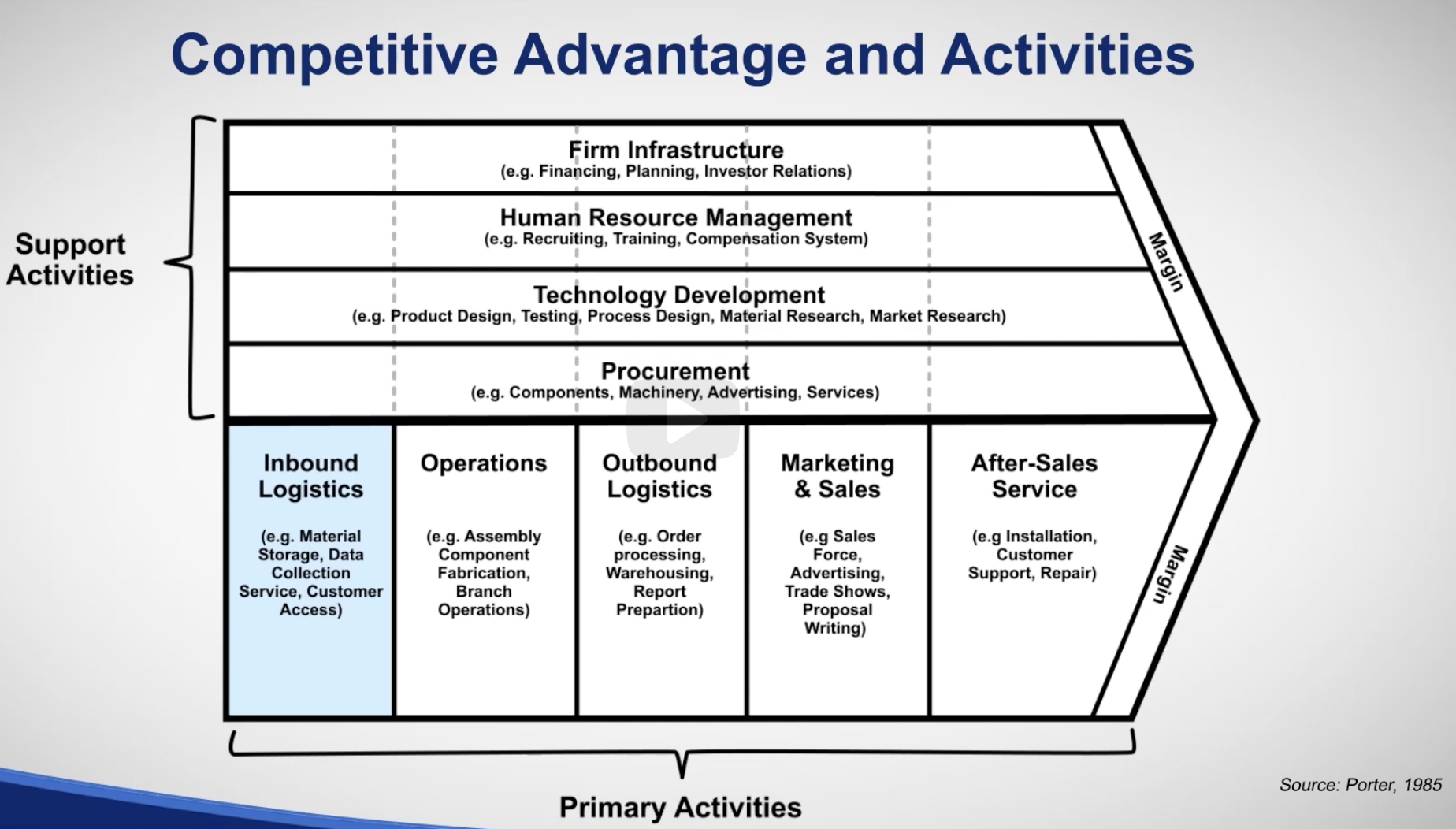
Activity systems - how do activities interact?
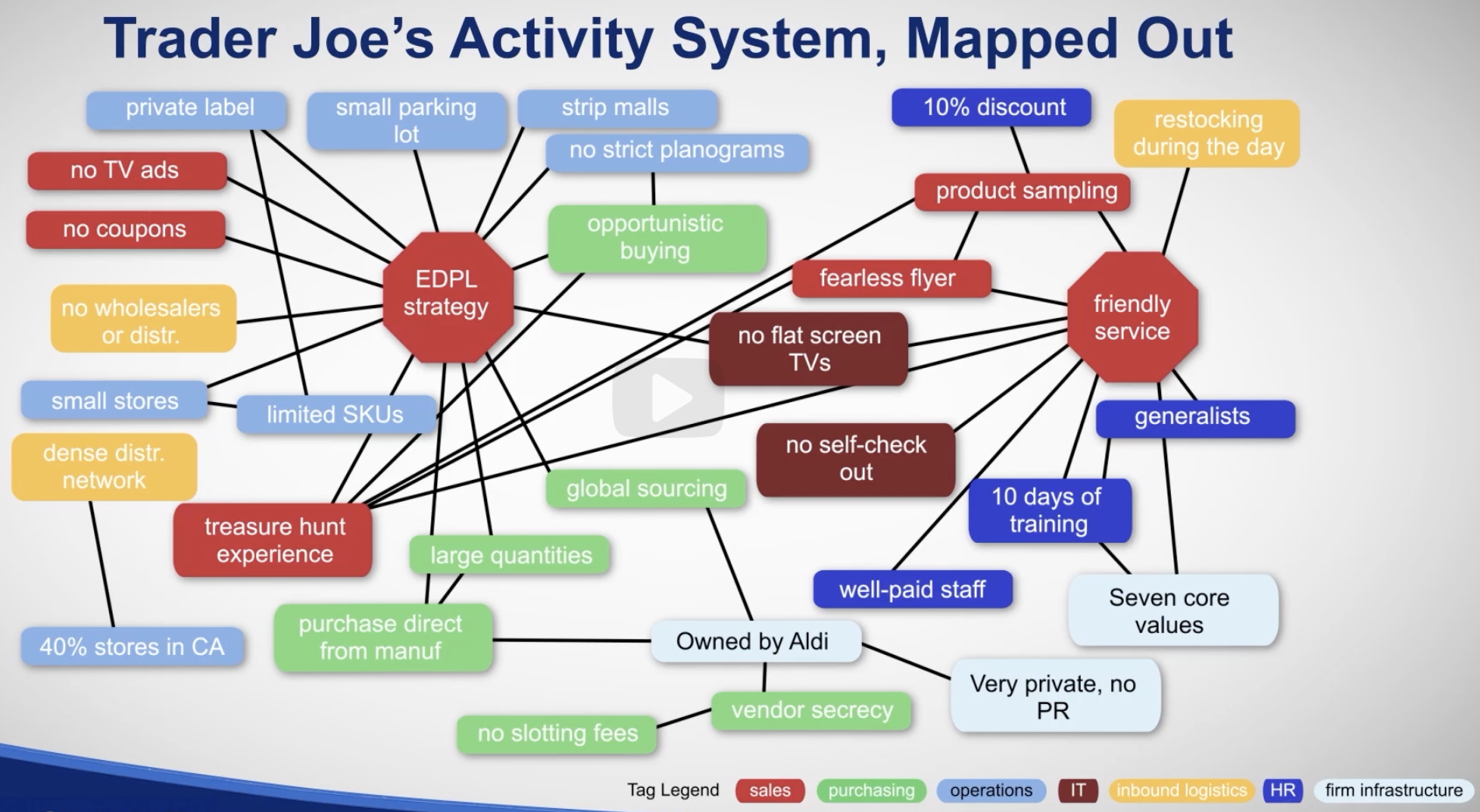
- Complementary activities (thick/main lines): more of activity A increases marginal benefit of B and vice versa
- Which are unqiue to this company? Strategic positioning
- What are the consequnces of changing an activity?
- If a competitor comes in with a completely different activity system (e.g. budget airline), often it’s impossible to adapt your activity system to compete, as it’s too different
- GM/Toyota/NUMMI example: needed to copy entire system exactly (including country culture), not individual components/activities
External Fit
Profitability (US): 20% industry, 20% corporation, 60% positioning
Value Appropriation
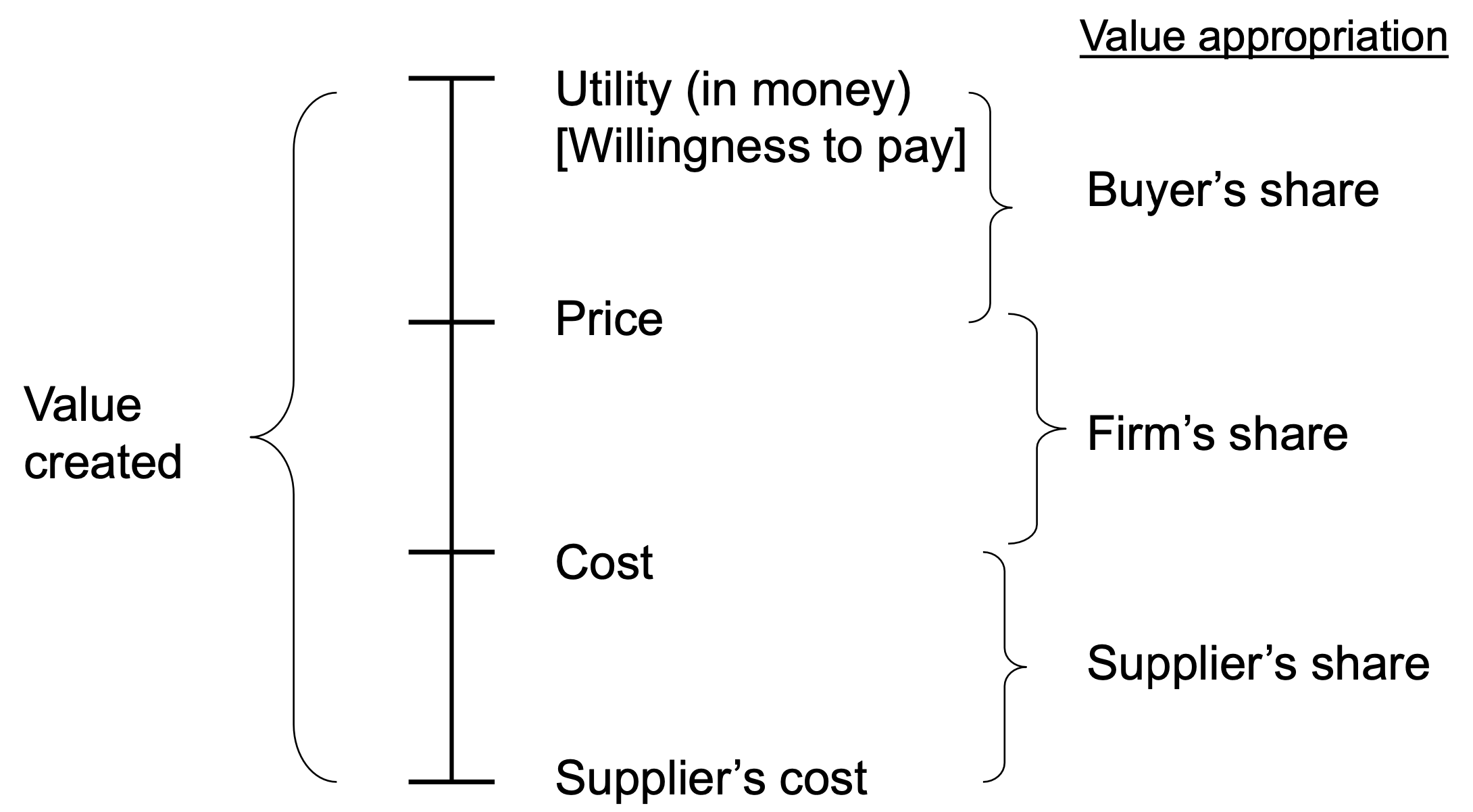
WTP varies by customers, different weighted drivers (and different weightings by customer segment)
Competitive advantage = [WTP - cost](for company A) - [WTP - cost](for company B)
Customers and Competition
- Who is the customer, and what is their need?
- Power tool competitors: alternative tool companies AND alternative gift companies
- When BMW first came to US, they failed because they didn’t have cupholders
Porter’s Five Forces
Customer power: price sensitivity; switching costs; backward integration (could customer do what we do)
Supplier power: same but in reverse
New: barriers to entry (capital, scale, brand)
Current: rivalry (market growth, number of competitors, strategic stakes)
Substitutes
Scenario Planning
Based on uncertainties: economy, technology, terrorism, pandemic, political, …
Pick two, put in a matrix, gives four scenarios → if this, then what? → check strategy initiatives against scenarios
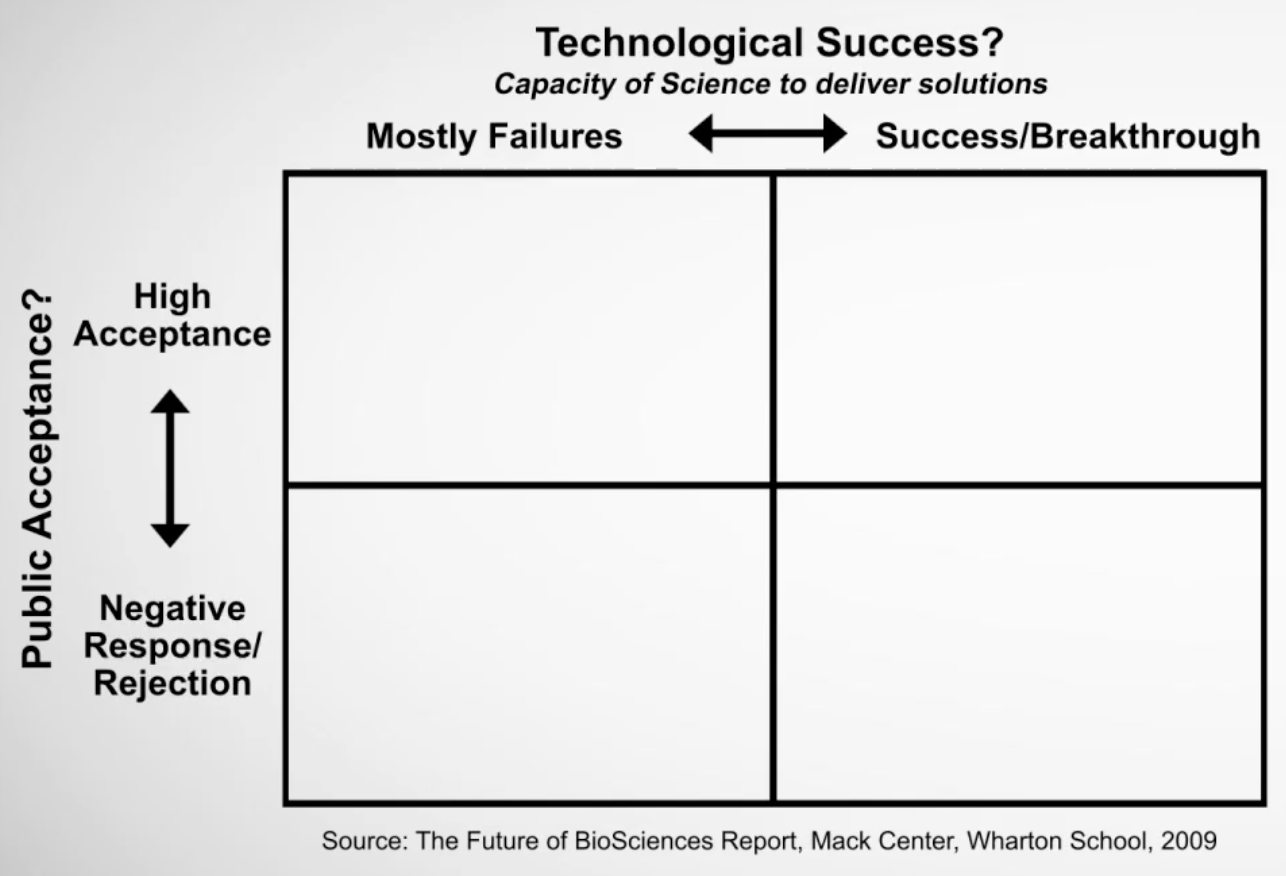
Strategy
Blue Ocean Strategy
Sometimes parts are blue for a reason (e.g. high cost low quality) → have others tried and failed before?
Strategy audit
- Indsutry: current, trends
- Customers: WTP, cost drivers
- Company/competitors: position, trends; business vs corporate
- Activites: OE vs SP
Dynamic Fit
Honda case study
Analysis
- Source of competitve advantage: cost
- Product: small, lightweight bikes (easy to standardise for economies of scale)
- Customers: middle class (large, underserved)
- Geography: CA (existing market) then expand
- Engine of profitabilitiy: low price → high volume → low cost → feedback to low price
- Focus on long-term not short-term profits
Reality
- No plans/knowledge → originally wrong bike size, wrong customer segment, no low price strategy → just took action and pushed forward, overcoming obstacles as they arose
- Mostly adaptable/flexibile, but some fixed “North star” vision/values
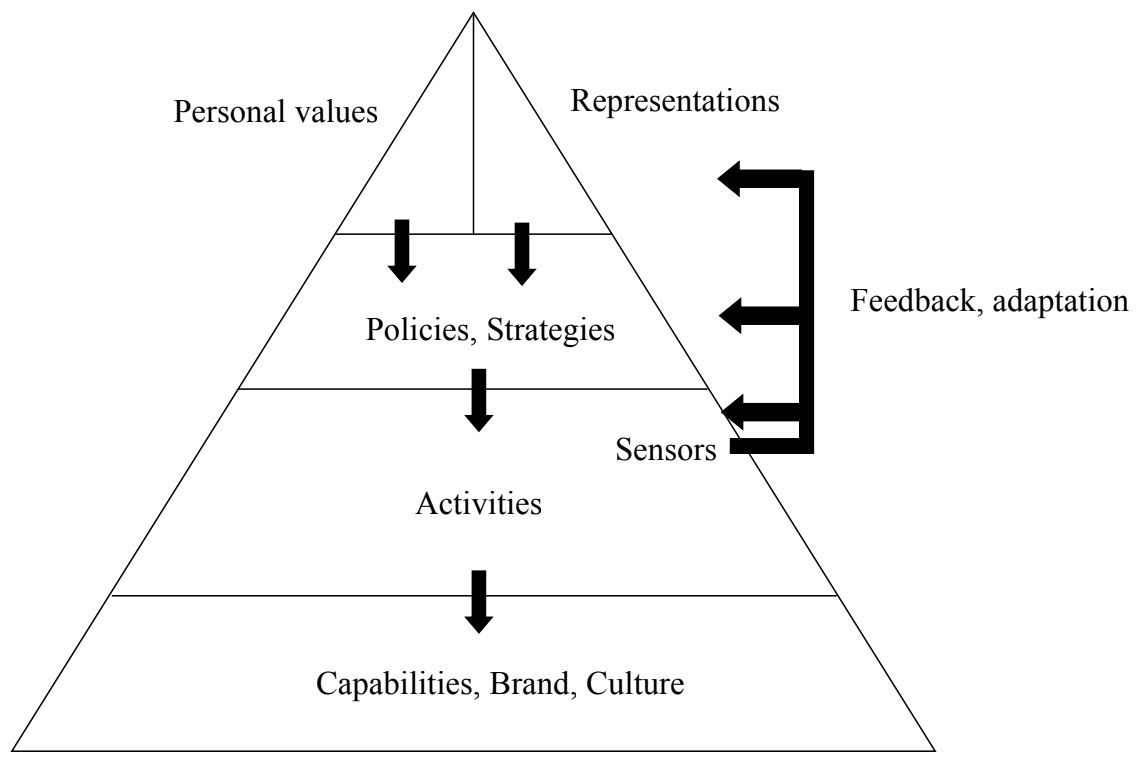
Barriers to response/reaction/adaption
- Perception (is there a need?)
- Performance vs time graph - but which performance?
- Disruption: when new product has a far better performance in one dimention and “good enough” in one performance dimension (not better) than existing products for the majority
- e.g. EVs: range is good enough but running costs are far better
- WTP increases with performance, but marginal increase decreases with improvements
- Knowledge (do we know how?)
- Motivation (do we want to?)
- “We make bespoke masterpieces, not mass-produced duplicates”
- Coordination/capability (can we pull it all together?)
-
- Fear / do nothing
Setting Strategy
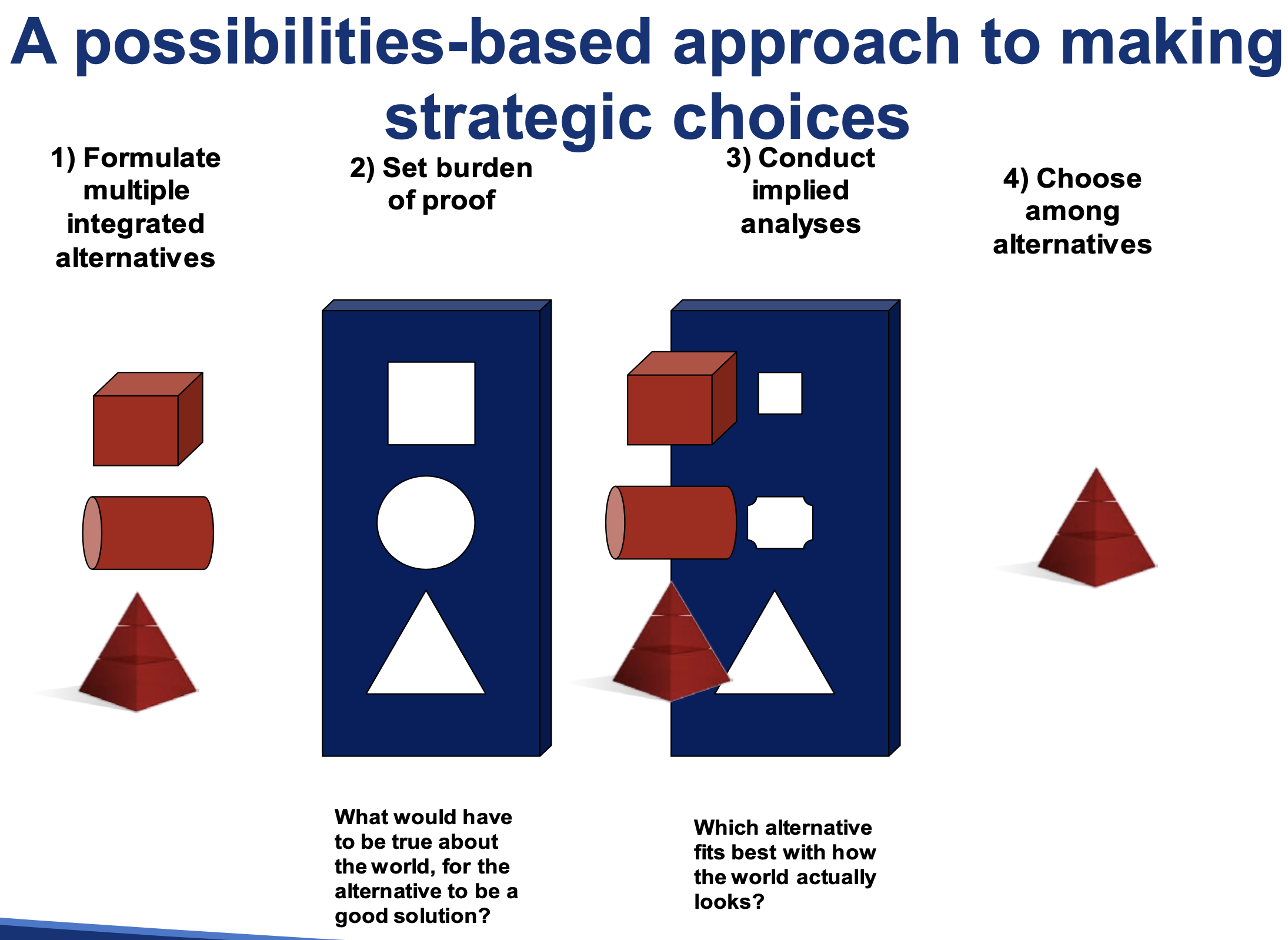
1. Strategic Possibilities
- Generate 3-5
- No judgement/evaluation at this stage
- First generate individually, then convene to share and discuss
- Approaches
- Inside out: what are we good at?
- Outside-in: what gaps does the market have?
- Far outside-in: what would be the Amazon of the industry?
- Is one intrigruing? Is one uncomfortable? When yes you’ve gone beyond the most obvious ones, so move onto the next stage.
2. Burden of Proof
- What must be true for this to be successful?
- Don’t discuss if the truth can be realised/the condition met yet
- Assess each possibility against these truths/conditions
- Consider the factors above
- External: competitors, industry, regulations, … (e.g. the market must be big enough)
- Internal: capabilities, activities, skills, … (e.g. we must be able to do it)
- Dyanimcs: trends, technologies, economy, … (e.g. there will be no recession)
- Ask the whole team: If all these conditions were met, do you think this would be a good idea? If no, why? → premortem
- Assess the existing strategy also - not changing could also be a risk.
3. Analysis
- Reorder so the condition least likely to hold true is first - if it fails, you don’t need to assess the other conditions.
- Test, as surprises may happen - e.g. higher prices can outsell lower prices due to assumed value.